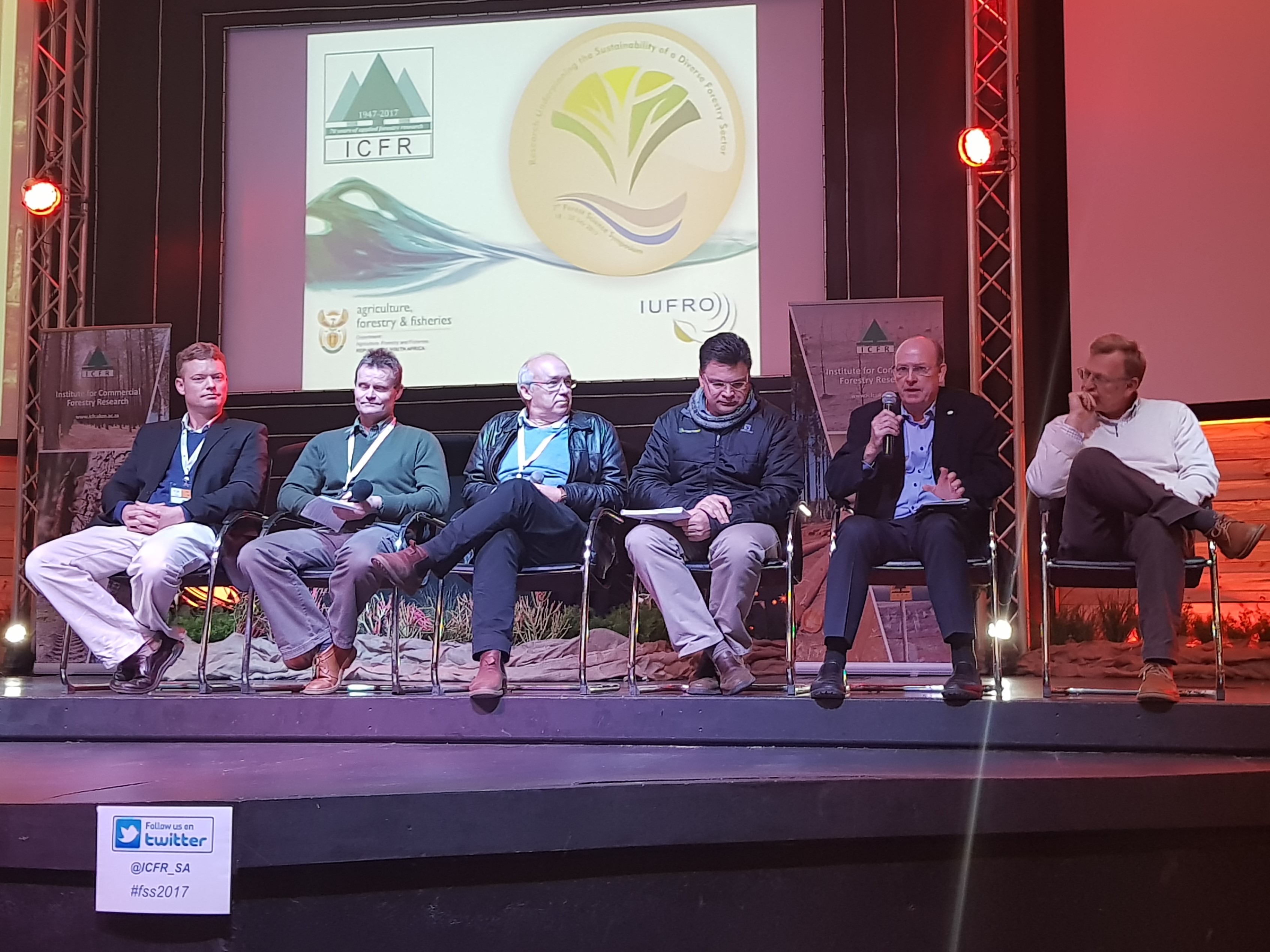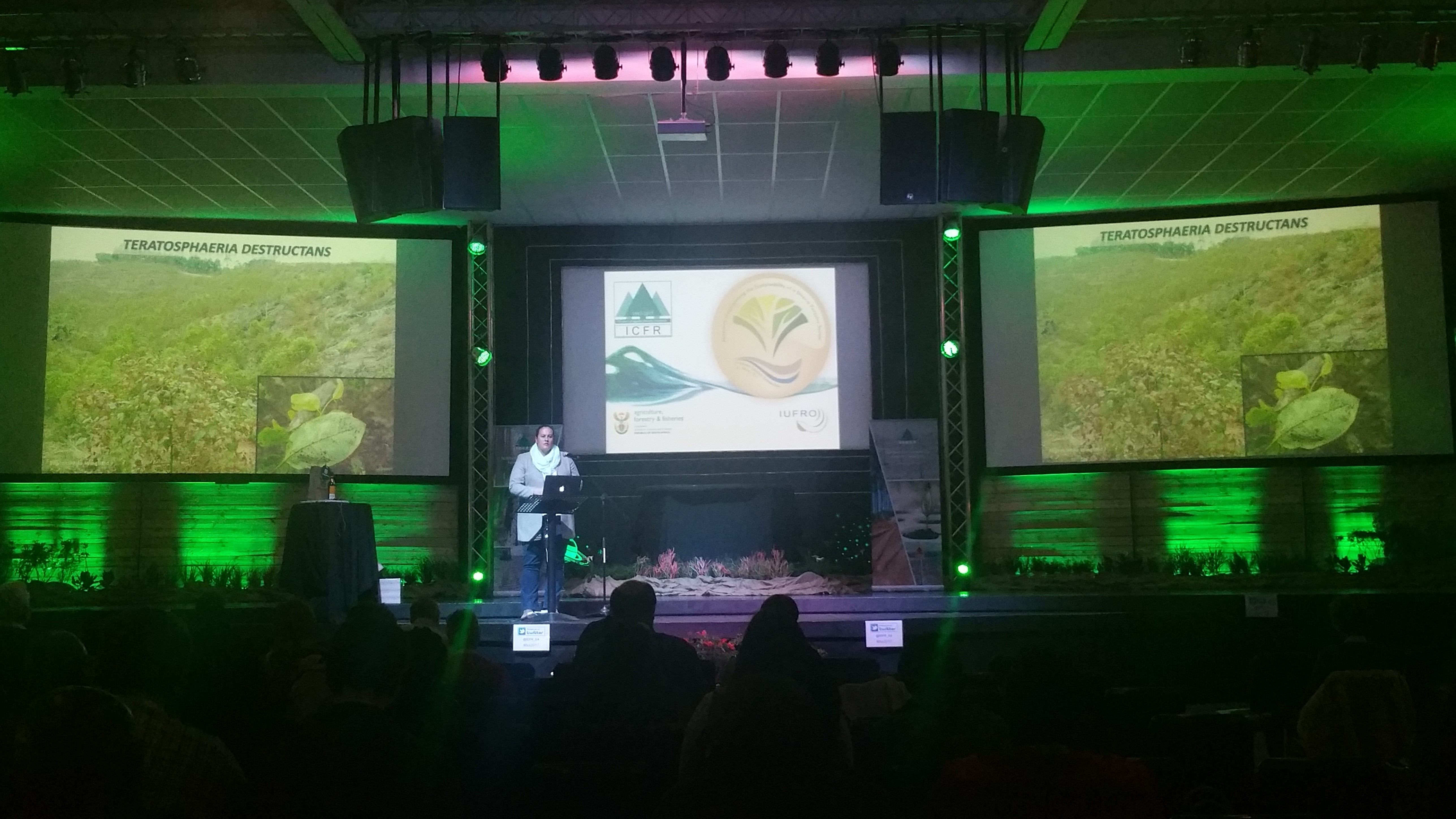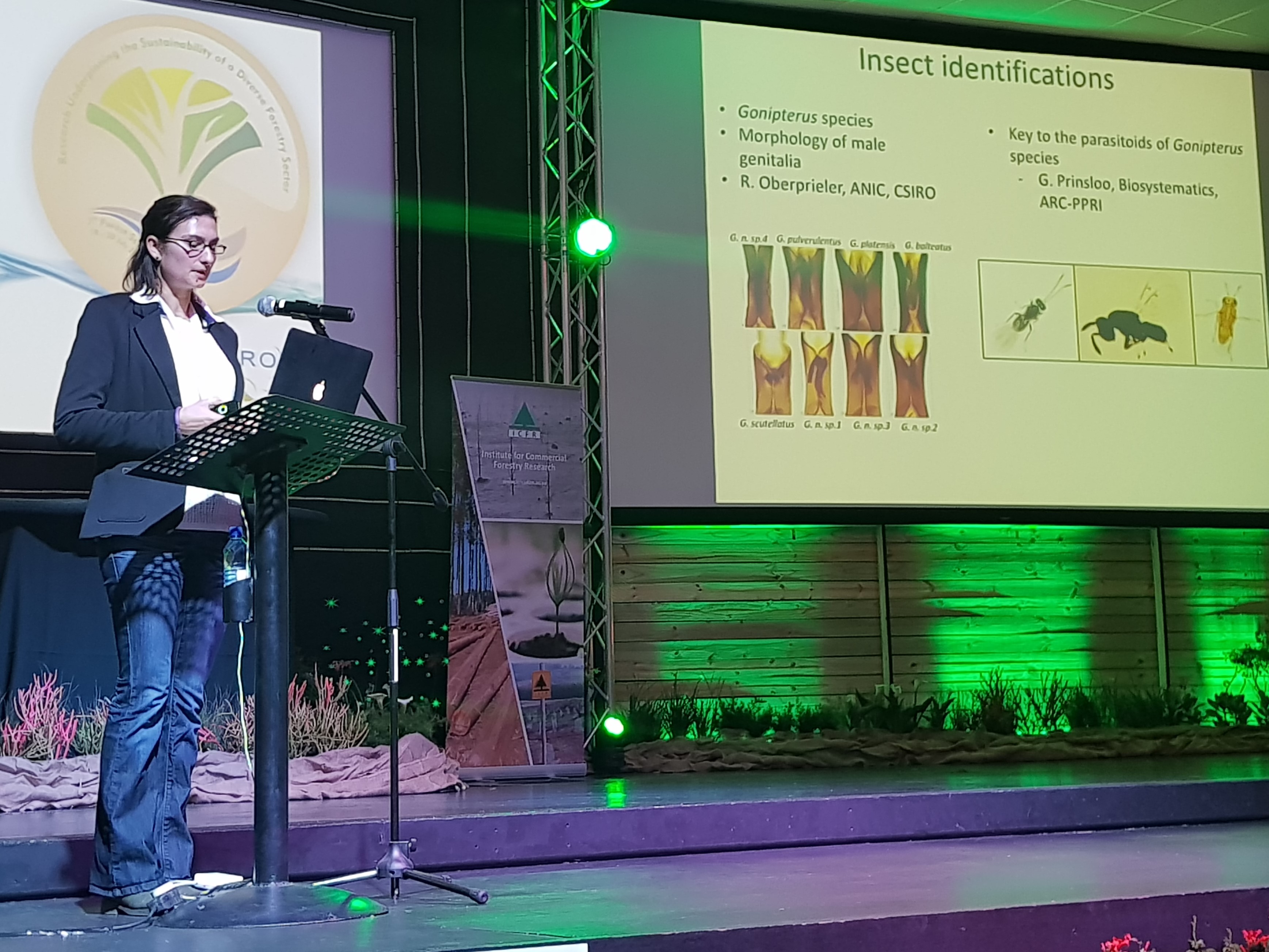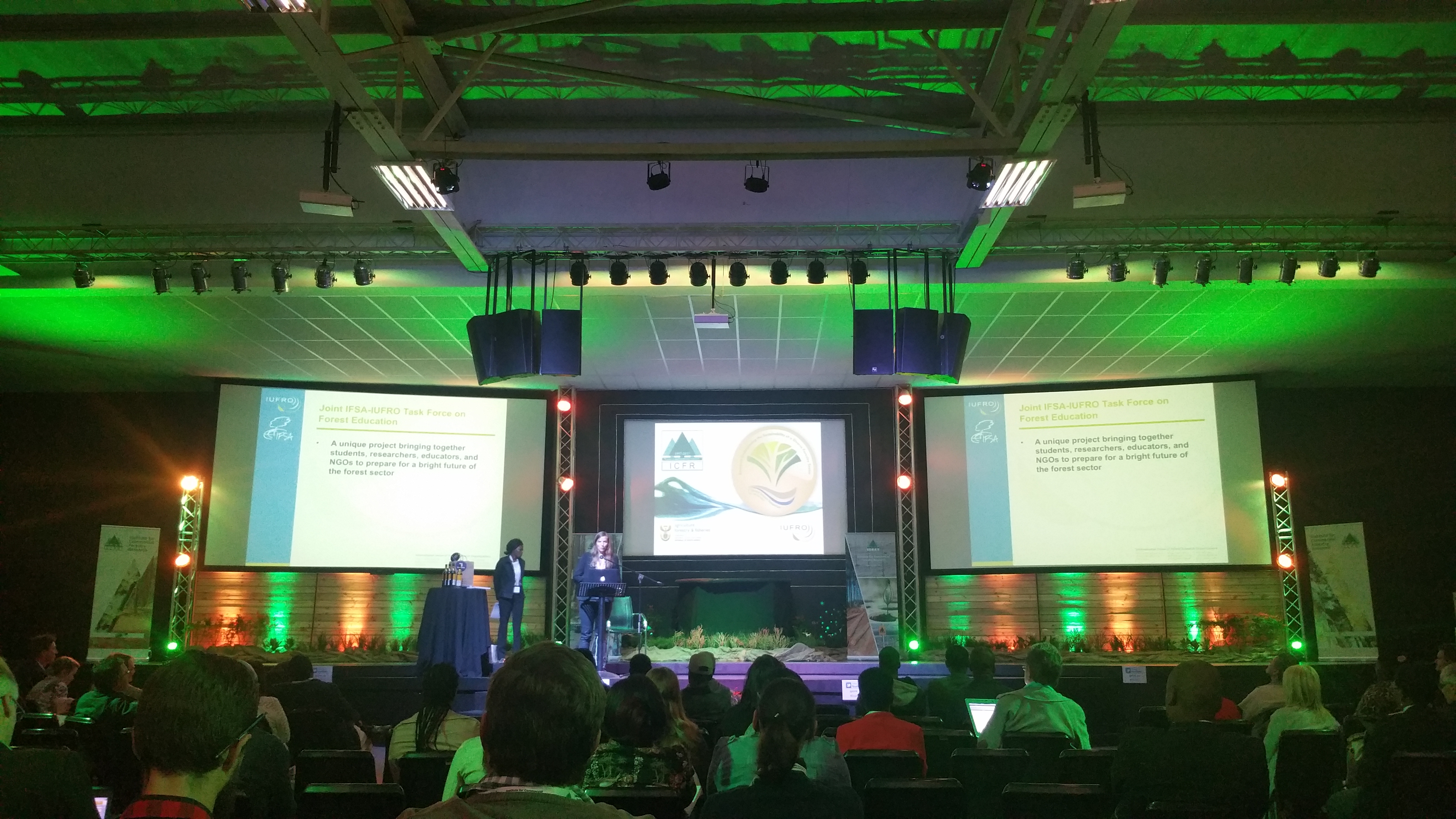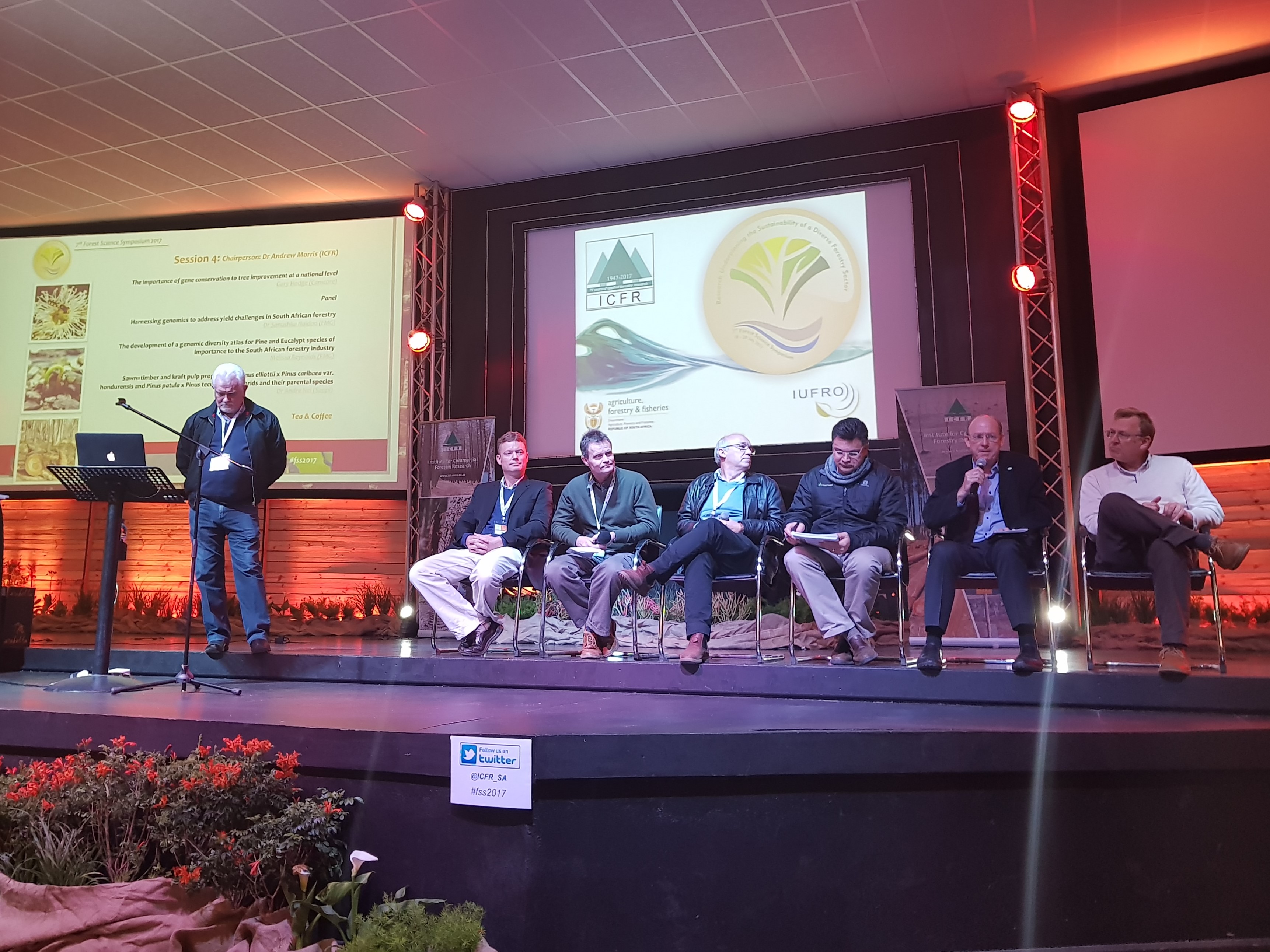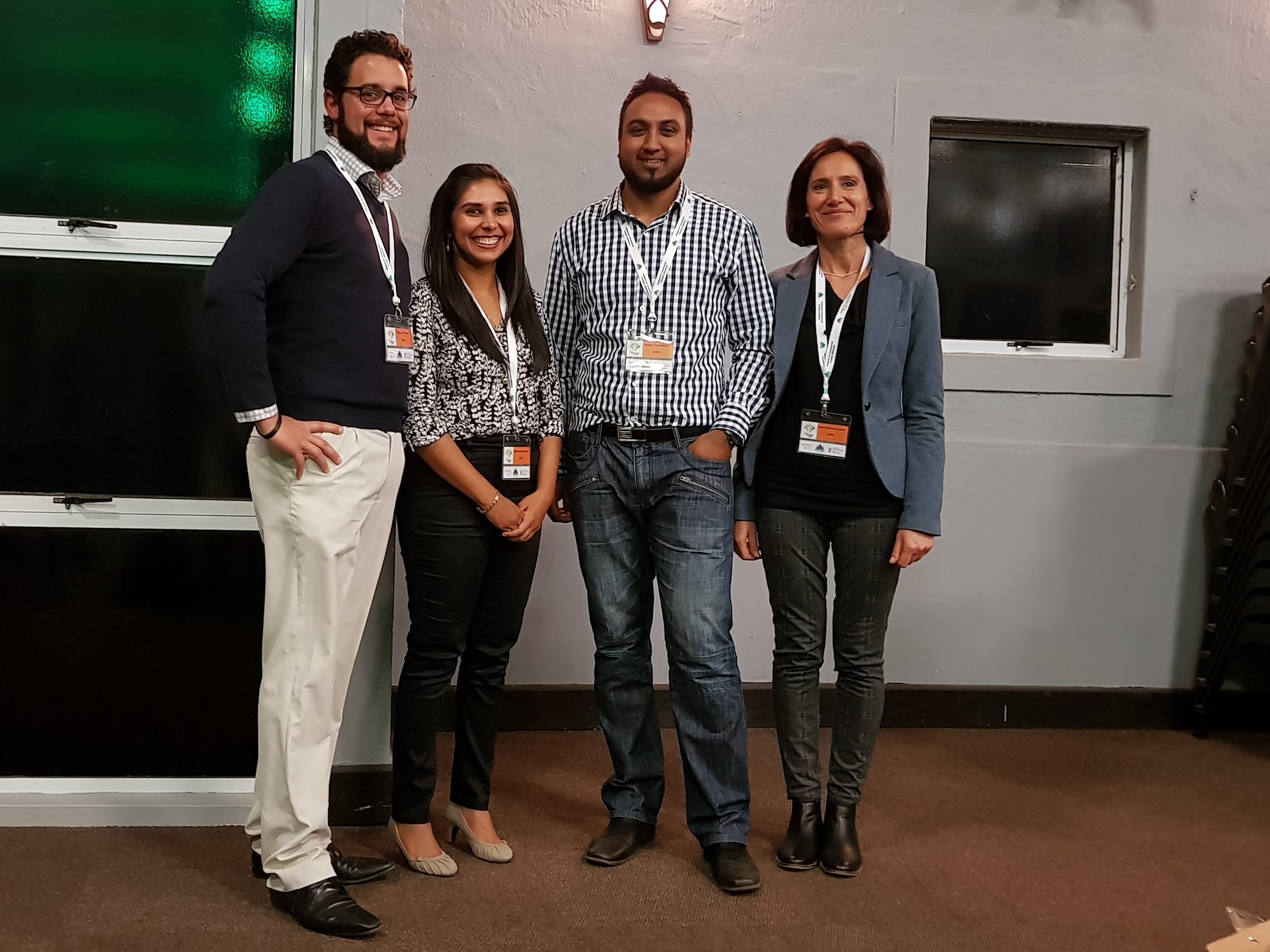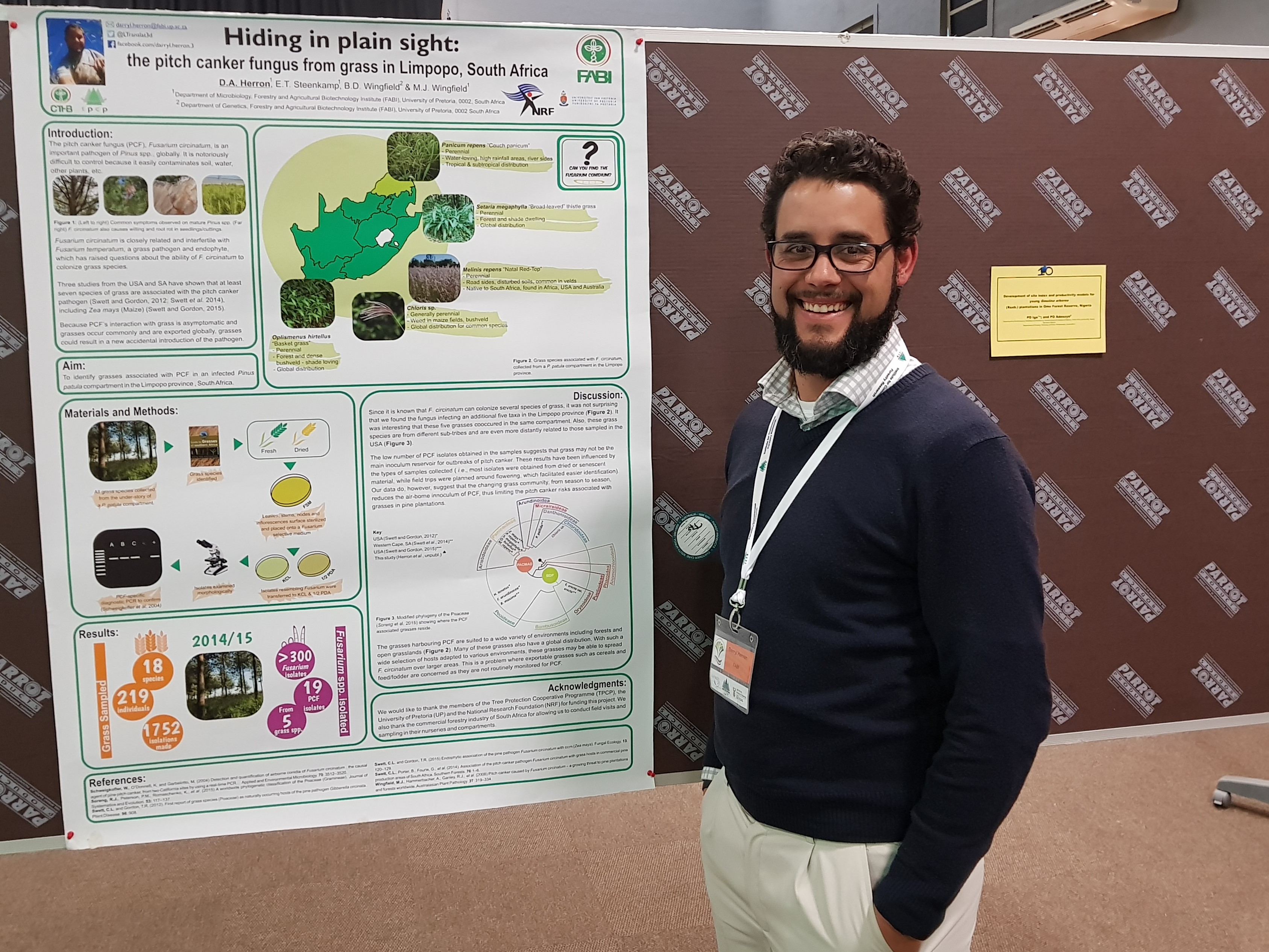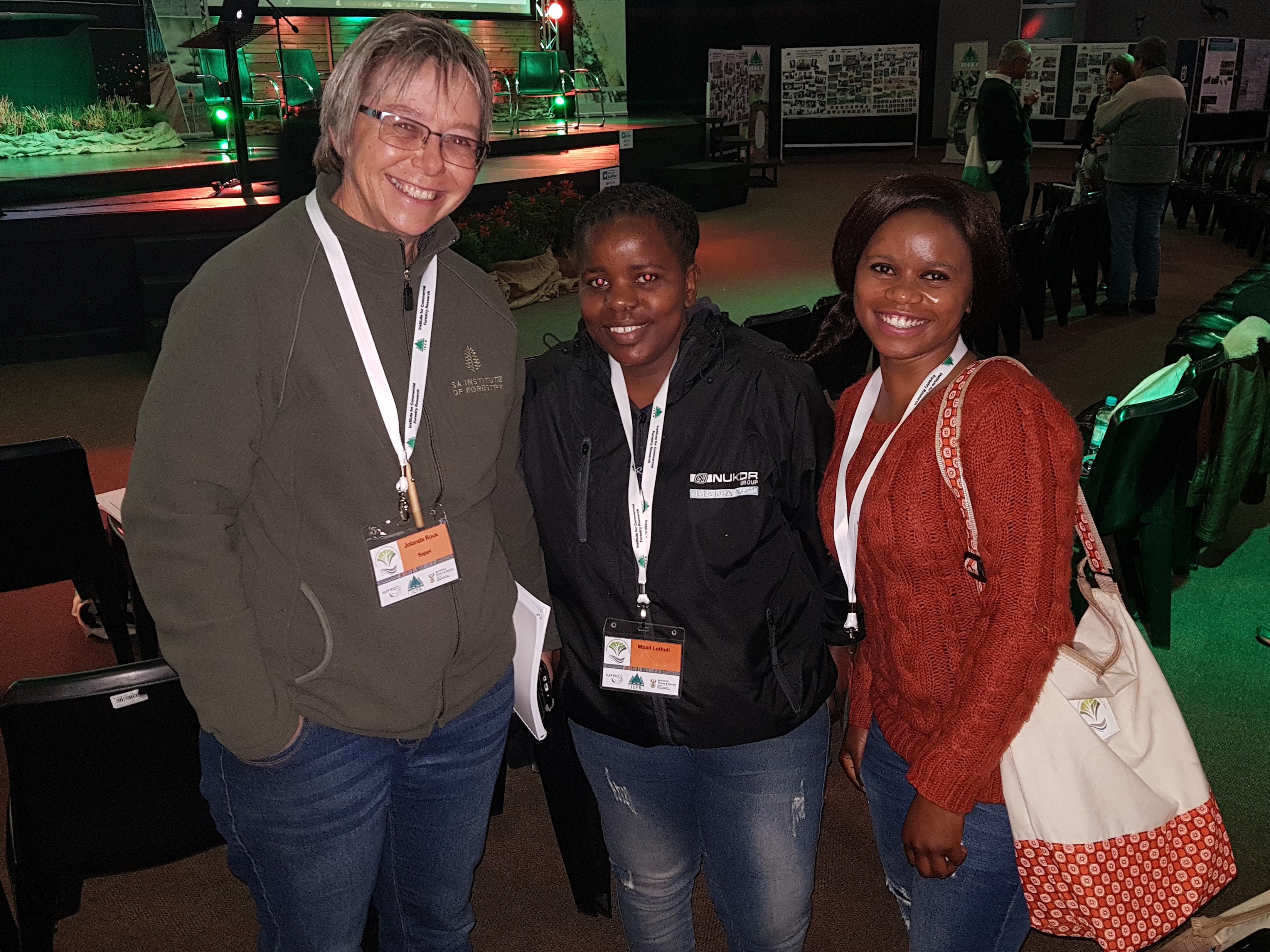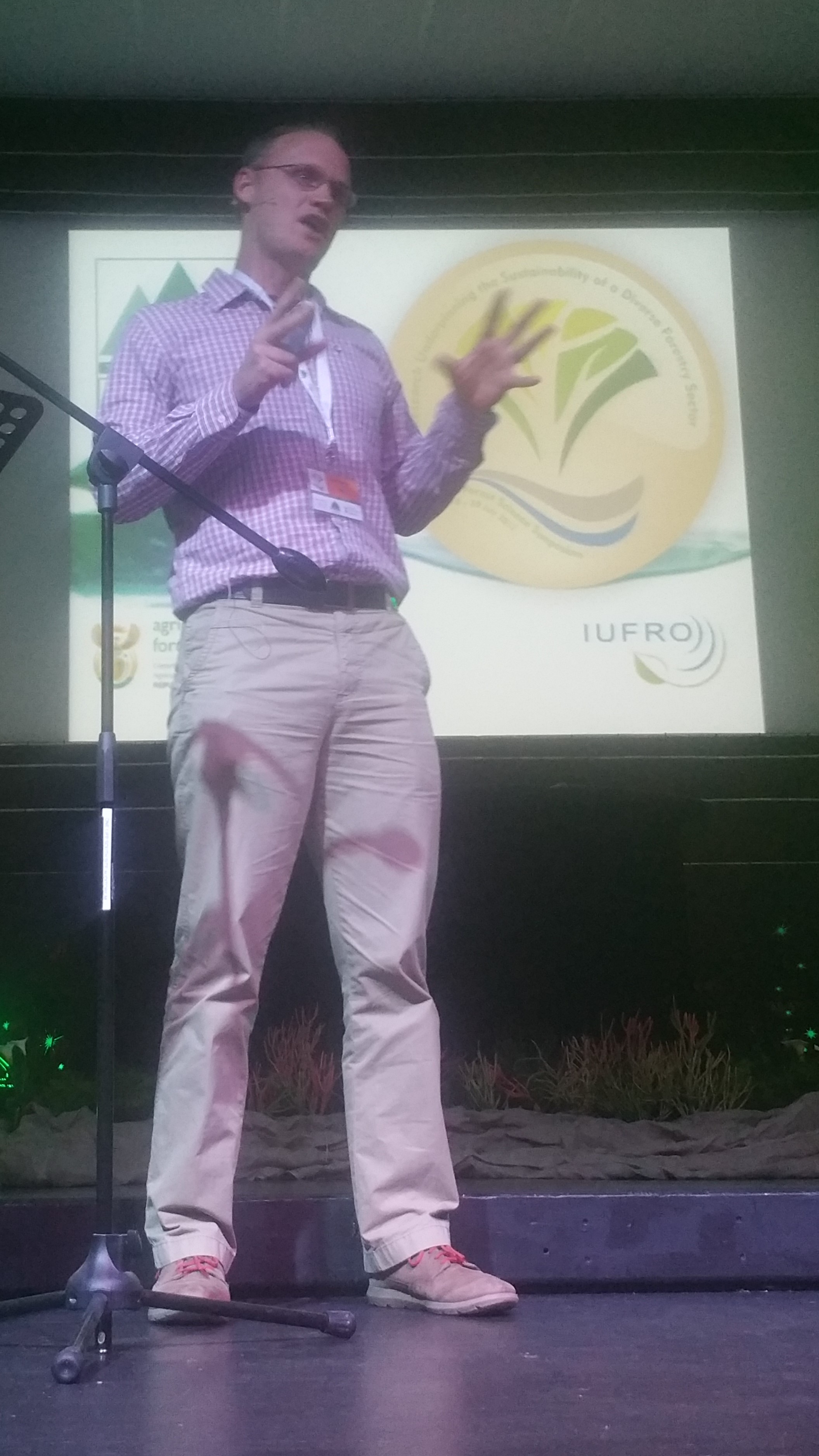FABIans contribute to the sustainability of a diverse forestry sector at the 7th Forestry Science Symposium 2017-07-28
FABI had a significant presence at the 7th Forestry Science Symposium hosted by the Institute for Commercial Forestry Research (ICFR) in partnership with the Department of Agriculture, Forestry and Fisheries (DAFF) and the International Union of Forest Research Organizations (IUFRO). This symposium, held in Pietermaritzburg from 18-21 July, brought together more than 200 participants from Government, commercial forestry companies, research institutions and universities. All sharing an interest in the research underpinning the sustainability of a diverse forestry sector; the theme of this year’s symposium.
The symposium began on Mandela Day, which celebrates the birthday of South Africa’s iconic past President, Nelson Mandela. On this day, people in South Africa and around the world spend 67 minutes or more of their day giving back to society. During the opening ceremony, several quotes from the late Nelson Mandela were displayed. The goals of this symposium were highlighted in what Mandela said about working together, educating and changing society.
Over the following two and a half days, the delegates learned about the challenges facing our forestry sector and how working together and sharing knowledge could help us overcome these. FABI Director and IUFRO President, Prof. Mike Wingfield gave one of the keynote addresses on the first day and spoke about the increasing threat of pests and diseases for plantation tree health. Dr Brett Hurley, Dr Michelle Schroder, Dr Sanushka Naidoo, Izette Greyling and Melissa Reynolds gave full-paper talks on their research ranging from important pests and diseases to harnessing genomics and developing a genome diversity atlas for pine and eucalypt species.
Many important issues were raised during the symposium while others focused on possible solutions for these and other forestry-related problems. Some of this work was presented outside of the full-paper sections in Speed Talks, two of which were given by Darryl Herron. These FAMElab-styled talks were a new and exciting addition to the programme and gave more speakers the opportunity to share their science.
Several posters showcased some of the work conducted by several of FABI’s postgraduate students: Aquillah Kanzi, Esna du Plessis, Darryl Herron, Emeldah Rikhotso, Samantha Bush, Osmond Mlonyeni, Seamus Morgan, Kayla Noeth and Caitlin Gevers. Theses posters were focused on a few of the pests and diseases that have had a significant impact on the commercial forestry industry of South Africa. Overall, the conference was a great success filled with good science and exciting opportunities. All of the delegates at this year’s Forestry Science Symposium gave their time for #MandelaDay to help our forestry community and those who depend on it.
Plenary Paper:
Plantation tree health: Increasingly threatened by pests and pathogens – MJ Wingfield.
Oral Presentation:
Teratosphaeria species: Important and emerging Eucalyptus leaf and shoot pathogens – I Greyling, E Rikhotso, MJ Wingfield, BD Wingfield, J Roux.
Biological control of insects in plantation forests: Optimising an old approach for diverse and changing environments – BP Hurley, B Slippers, MJ Wingfield.
Harnessing genomics to address yield challenges in SA forestry – S Naidoo, B Slippers, AA Myburg.
The development of a genomic diversity atlas for pine and eucalypt species of importance to the South African Forestry industry – SM Reynolds, YJ tii-Kuzu, MM O’Neill, JS Henning, TL Swain, B Meyer, SD Verryn, MM Mphahlele, F van Deventer, A van der Hoef, S Naidoo, A Nel, T le Roux, L de Waal, JJ Acosta, F Isik, GR Hodge, KG Payn, A Kanzler, S Naidoo, AA Myburg.
Distribution and thermal thresholds of Gonipterus species in Australia – ML Schroder, HF Nahrung, S Lawson, B Slippers, MJ Wingfield, BP Hurley.
Short Paper:
Hiding in plain sight: the pitch canker fungus in Limpopo grasses – D Herron.
Pest and disease diagnostics in the Anthropocene – D Herron.
Poster Presentation:
Host specificity of the parasitoid Psyllaephagus bliiteus, a biological control agent of Glycaspis brimblecombei – SJ Bush, B Slippers, BP Hurley.
Austropuccinia psidii: distribution, host range and population diversity in South Africa – E du Plessis, AR McTaggart, I Barnes, J Roux.
The complex Leptocybe invasa gall community on Eucalyptus – CR Gevers, G Ditrich-Schroder, SJ Bush, A Morris, I Germishuizen, B Slippers, BP Hurley.
Hiding in plain sight: The pitch canker fungus in Limpopo grasses – D Herron, ET Steenkamp, BD Wingfield, MJ Wingfield.
Genome sequencing reveals a heterothallic mating system in the Eucalyptus pathogen Chrysoporthe austroafricana – AM Kanzi, BD Wingfield, ET Steenkamp, NA van der Merwe.
Retracing pest invasion and improving biocontrol management using genetic markers: The case of Sirex-Amylostereum-Deladenus symbioses – XO Mlonyeni, BD Wingfield, J Greef, MJ Wingfield, B Slippers.
New species of Quambilaria from Eucalyptus seed capsules and eucalypt-feeding insects in South Africa – SW Morgan, M Schroder, T Paap, S Marincowitz, MJ Wingfield, ZW de Beer.
Investigating the development of the wood-boring moth Coryphodema tristis on Eucalyptus nitens in South Africa – KP Noeth, M Verleur, B Slippers, BP Hurley.
Leaf pathogens of sub-tropical species of Eucalyptus in South Africa – E Rikhotso, I Greyling, S Fraser, J Roux.
Results of the Coryphodema tristis mass trapping pilot project conducted at Lothair plantations during Agust to December 2016 – M Verleur, K Noeth, M Bouwer.



